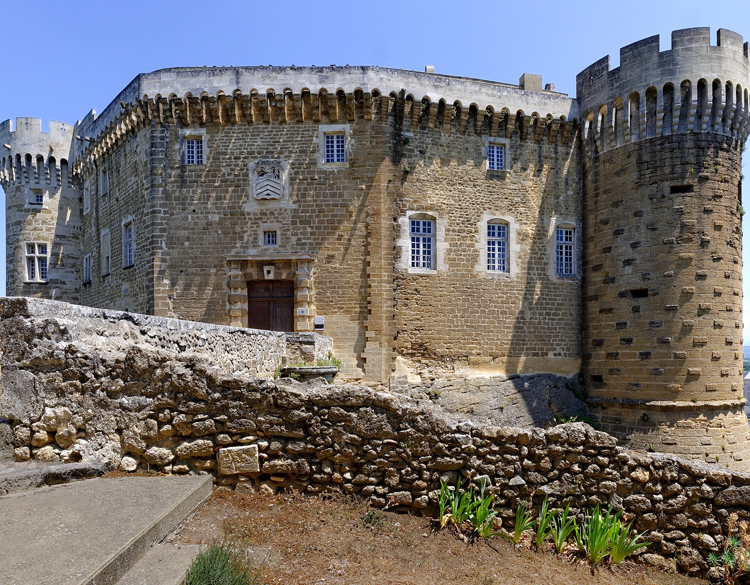A vast warren
The warren of Suze-la-Rousse is a vast wooded park of 23 hectares, dotted with vestiges, including one of the last remaining real tennis courts in France.
Warren: from the Anglo-French "warenne" and Old French "garenne" from the Latin "garenna", means private forest.
It takes up nearly the whole rocky plateau on which the château stands. Holm oak, white oak, box, pine: the diversity of its species, mainly Mediterranean, make it a pleasant place for a walk. Originally, the warrens were game parks where the right of seigniorial preserve was applied.
The vestiges of a real tennis court, a dovecote, a cold room and a chapel, dotted about the place, offer the visitors numerous points of interest.
built in the 16th century in honour of the visit of King Charles IX and his mother Catherine de Medici. In 1564, this ancestor of the game of tennis was already played with a racket and the score went 15 30 45 60, like today 15 30 40 and game! It was "the sport of kings and the king of sports". Well attended, the real tennis courts were to be changed some time later into theatres. Many popular expressions have stemmed from these games and places both in French and English: qui va à la chasse perd sa place (literally: "he who goes out hunting loses his place"), les enfants de la balle (meaning "children born into the profession"), to strike the ball under the line, the ball is in one's court...
Situated above the working face of a former quarry, it is represented on old eighteenth-century engravings. The breeding of pigeons was attractive because it offered good-quality additional meat. And besides, the droppings produced, the guano, was a sought-after fertiliser for farming. Under the Ancien Régime, only the lords and the religious communities were allowed to breed pigeons. The putlog holes were meant for the pigeons' egg-laying.
Dug into the rock, it was the place where was kept the natural ice which came from the exploitation of frozen lakes and marshes. Set up in 1882, the last exploitation of ice farmers of Lus-la-Croix-Haute was still employing about 40 people around 1925.
The private chapel of the Suze-la-Rousse lords is dedicated to Archangel Michael. It was raised in 1620 by Rostaing de la Baume, François de la Baume's son (1526-1587). The façade includes a door covered with a semi-circular arch and fluted pilasters topped by a cornice.
A few steps from the château entrance, large blocks of stone bear traces of old family coats of arms. They are the original decoration of the grand courtyard battered during the Revolution. Some gargoyles, damaged also, are stocked close by.










